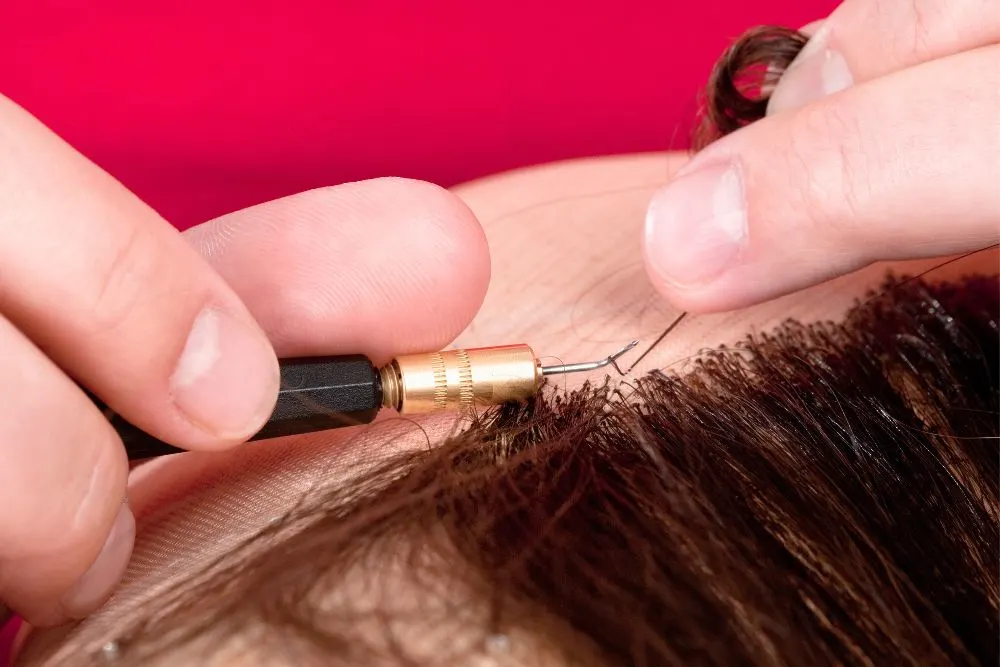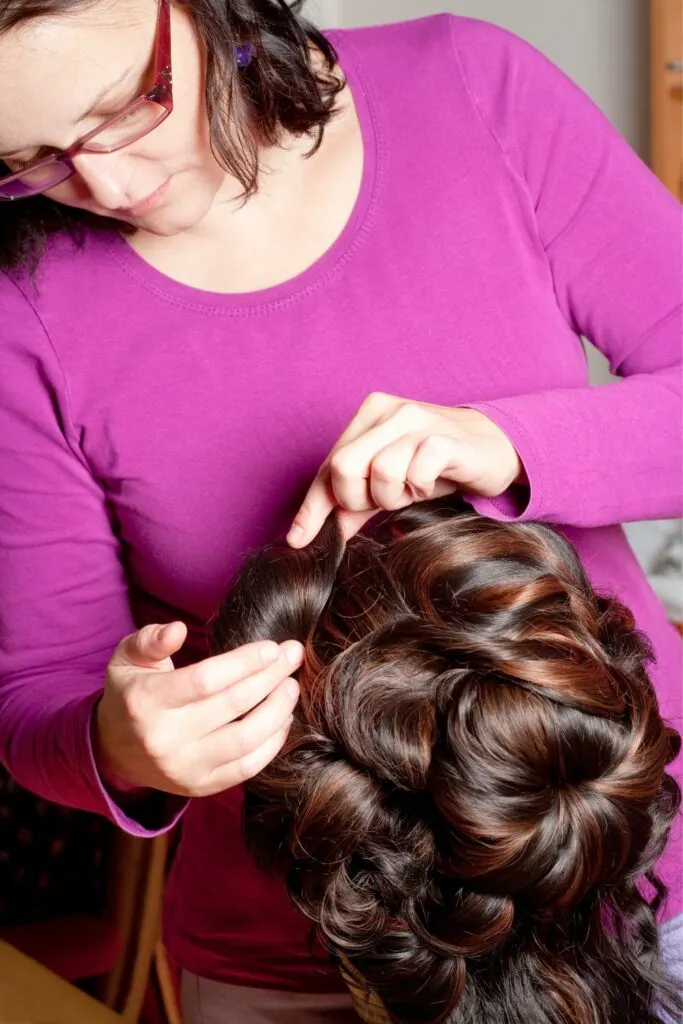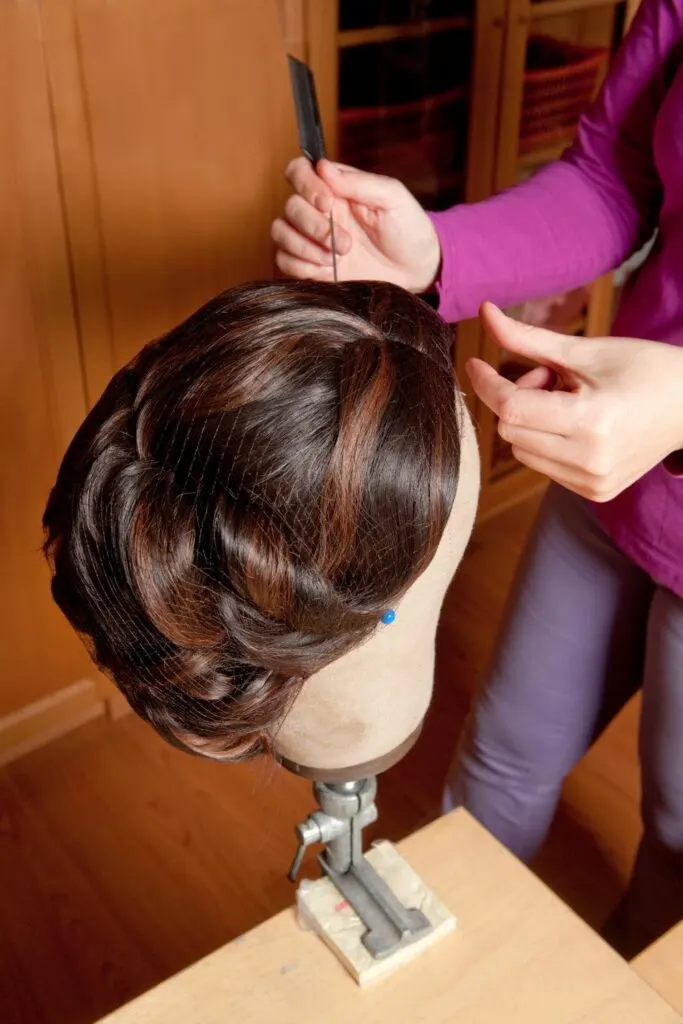Wig making is an exciting and lucrative career path for those passionate about hair and fashion. The process entails crafting customized hairpieces, including full wigs and extensions, to cater to a variety of clients, from those seeking to change their look to individuals experiencing hair loss.

By mastering the art of wig making, you can embark on a fulfilling journey in the world of beauty and fashion.
To become a successful wig maker, it’s essential to learn the different techniques and materials used in creating wigs. This includes understanding various hair types, selecting high-quality materials, and specializing in a niche market that suits your skills and interests. As you develop your craft, it’s crucial to stay updated on the latest trends and continuously enhance your skills.
Additionally, it’s important to be aware of any licensing requirements in your region, as well as attending professional courses to refine your skills further. By following a strategic and well-informed approach, you’ll be well on your way to establishing yourself as an accomplished wig maker in the beauty industry.

Understanding Wig Making
History of Wigs
Wigs have a long and fascinating history that dates back to ancient civilizations. Both men and women wore wigs in ancient Egypt to protect their scalp from the harsh sun and to display their status in society. Later, wigs gained popularity in ancient Rome, Greece, and during the 17th and 18th centuries in Europe.
Types of Wigs
There are several types of wigs available today, which cater to various needs and preferences. Some common types include:
- Full wigs: These cover the entire head and are available in various styles, colors, and lengths.
- Half wigs: As the name suggests, these wigs cover only half of the head and are worn to add volume or length to one’s natural hair.
- Lace front wigs: These wigs have a lace front for a more realistic hairline, making it difficult to detect the wig when worn.
Reasons for Wearing Wigs
Wigs serve various purposes for different people. Some common reasons why people wear wigs include:
- Medical conditions, such as alopecia or chemotherapy-induced hair loss
- Hair thinning or balding
- Fashion, as a way to change one’s appearance, style, or color without altering natural hair
- Convenience, as wigs can save time and effort in maintaining and styling hair
Wig Materials: Natural Hair and Artificial Hair
Wigs can be made from either natural hair or artificial hair. Each material has its advantages and disadvantages.
Natural hair wigs are made from real human hair, often sourced from donors who have healthy hair. These wigs look and feel natural and can be styled and maintained like one’s own hair. However, they tend to be more expensive and may require more maintenance than artificial hair wigs.
Artificial hair wigs are made from synthetic materials, such as nylon or acrylic fibers. They are more affordable than natural hair wigs and are available in a wide range of colors and styles. On the downside, artificial hair wigs may not be as long-lasting as their natural hair counterparts and may not look as natural, especially up close.
Whichever type of wig you choose, understanding the different options and materials will help you make an informed decision when selecting the perfect wig.

Getting Started with Wig Making
Necessary Skills and Qualities
To excel as a wig maker, there are certain skills and qualities that you should develop:
- Patience: Wig making can be a time-consuming process, so being patient is essential.
- Creativity: A good wig maker should be able to come up with new and innovative wig designs to cater to different preferences.
- Focus: Attention to detail is crucial in the wig-making process, so a strong ability to focus on your work is needed.
- Confidence: As a beginner, you might face challenges; having confidence in your abilities will help you overcome obstacles and grow in your craft.
Wig-Making Courses and Certifications
To become a professional wig maker, it’s important to take courses that will provide you with the necessary skills and knowledge. Some options include:
- FINGAZ Beauty Academy offers an online Wig Making 101 course for beginners, which is currently on sale for $19.00.
- Moana Hair conducts monthly 2-day, 10-hour classes that include all essential tools for starting your career in wig making.
- Master Wig Making provides a comprehensive class where you can learn how to design custom wigs and complete a ready-to-wear wig by the end of the session, with classes ranging from 6-8 hours.
Licensing Requirements and Cosmetology Education
Requirements for wig makers may vary depending on your location. It is advisable to research your area’s specific regulations, but some general steps include:
- Attend hairdressing training courses or cosmetology school to gain foundational knowledge in hairstyling.
- Complete a wig-making certification course to develop specialized skills.
- Understand any licensing requirements in your area, such as obtaining a professional cosmetology license, which will enable you to operate legally.
By following these steps and focusing on developing the necessary skills and qualities, you’ll be well on your way to becoming a successful wig maker.

Tools and Techniques
Essential Equipment and Supplies
To become a skilled wig maker, you will need a range of equipment and supplies. Some essential items include:
- Malleable Wig Block: This is crucial for shaping and styling the wig.
- Sewing Machine: A sewing machine is needed for creating custom wig caps and sewing wefts of hair.
- Needles and Thread: Various sizes and types of needles are required for different sewing techniques.
- Hair Clips and Pins: These help in securing hair during weaving, cutting, and styling.
- Scissors: Sharp scissors for cutting hair and trimming the wig.
- Hair Fibers: A variety of artificial and natural hair fibers for creating diverse styles.
Creating Custom Wig Caps
A vital skill in wig making is creating custom wig caps. You should learn how to measure the client’s head, choose appropriate materials, and design a custom cap that fits comfortably. This is the foundation for ensuring a well-fitted and comfortable wig.
Hair Textures and Colors
When making wigs, it’s essential to understand different hair textures and colors. This knowledge will help you select suitable hair extensions and fibers for your client’s preferences and needs. Experiment with various types of hair textures such as straight, wavy, curly, or coiled hair, and also get familiar with a wide range of hair colors to cater to diverse clientele.
Measuring and Cutting
In wig making, precision matters. You should know how to measure a client’s head accurately before cutting the hair fibers. Measuring ensures a proper fit and a professional-looking final product. Besides, mastering cutting techniques is crucial for creating different hair lengths and styles.
Weaving, Sewing, and Needlework
The process of connecting hair fibers to the wig cap is critical for creating a durable and natural-looking wig. Learn how to weave and sew hair wefts onto the cap, using specific sewing techniques and needlework. Consider practicing various methods such as hand-sewing, machine sewing, and ventilation for diverse wig styles.
Styling and Coloring Techniques
To make the wig look attractive and realistic, mastering styling and coloring techniques is necessary. Gain expertise in various hairdressing skills like curling, straightening, and updo creation. Experiment with different coloring methods, such as highlights, balayage, and ombre, to add depth and dimension to the wigs. Remember to stay updated on the latest trends and styles to keep your wig creations fashionable and relevant.
Creating Custom Wigs
Building a Client Base
One of the first steps to becoming a successful wig maker is to build a diverse client base. Custom wigs can cater to the needs of both men and women, and it’s essential to focus on their specific requirements to create distinctive and tailored hairpieces. By building a diverse client base, you will become a specialized wig maker in high demand.
Understanding Client Needs: Hair Loss and Medical Conditions
A crucial aspect of creating custom wigs is understanding your clients’ needs. Many individuals require wigs due to hair loss caused by medical conditions such as alopecia or as a side effect of chemotherapy. For clients with medical conditions, wig makers need to have a thorough knowledge of various hairpiece patterns and materials to provide the most comfortable and natural-looking wigs.
Designing for Theatrical Costumes and Performances
Another niche market for custom wig makers is the theater industry. Designing wigs for theatrical costumes and performances requires creativity and a keen eye for detail. Specialized training in wig making for the arts, such as for actors and opera singers, will boost your expertise in designing intricate wigs and hairpieces, including beards.
Here’s a list of skills required when designing wigs for theatrical costumes and performances:
- Creativity in various hairpiece patterns
- Understanding of color matching
- Ability to create period-specific hairstyles
- Working with different materials, such as human hair
Children and Specialty Wigs
Custom wig makers should also focus on crafting wigs for children, as their needs can be different than adult clients’. Children may require specialty wigs due to medical conditions, hair loss, or other factors. It’s imperative to create wigs that are comfortable, lightweight, and hold securely on smaller heads. Concentration on this niche can help you provide specialized wigs that cater to children’s unique requirements.
In conclusion, aim to build a diverse client base, understand various needs, and specialize in different niche markets, such as theatrical costumes and children’s wigs. This approach will ensure you become a versatile and sought-after custom wig maker.
Building a Successful Wig Business
Developing a Business Plan
When starting your wig business, the first essential step is crafting a comprehensive business plan. This plan will guide your business decisions and should include a thorough understanding of the wig industry, target market, financial projections, and potential competition. Outline a clear vision for your business, pinpoint your specialization, and assess the necessary equipment and resources to offer your customers the best possible products and services.
Marketing and Advertising
To succeed, wig makers must develop a robust marketing and advertising strategy to build a solid client base. Harness various marketing channels, such as social media platforms, email campaigns, and advertisements. Highlight your unique selling points (USPs), like high-quality wigs, custom-made offerings, or a range of styles and colors. Emphasize the wigs’ natural look and how they cater to each client’s specific needs, making them feel confident and fashionable.
Wig Care, Maintenance, and Repair Services
Excellent wig care, maintenance, and repair services are vital in retaining happy customers and differentiating your business from competitors. Offer care and maintenance tutorials, covering how to use a wig stand, style the frontal, and maintain the wig’s overall health. Additionally, provide servicing for regular wear and tear, repairs for damaged wigs, and teach proper communication skills in addressing sensitive client concerns.
Pricing and Financial Considerations
Lastly, pricing and financial considerations are key aspects of running a successful wig business. Analyze competitors’ pricing structures and research industry standards to establish reasonable prices for your products and services. Ensure your pricing strategy accommodates various budgets to attract a wide range of clients. Keep track of all expenses related to your business, including equipment, rent, salaries, and marketing, to make informed financial decisions.
By addressing these essential areas, your wig business will be well-prepared for success in the competitive market. Just remember always to prioritize customer satisfaction and maintain the high-quality standards that will set your business apart.
